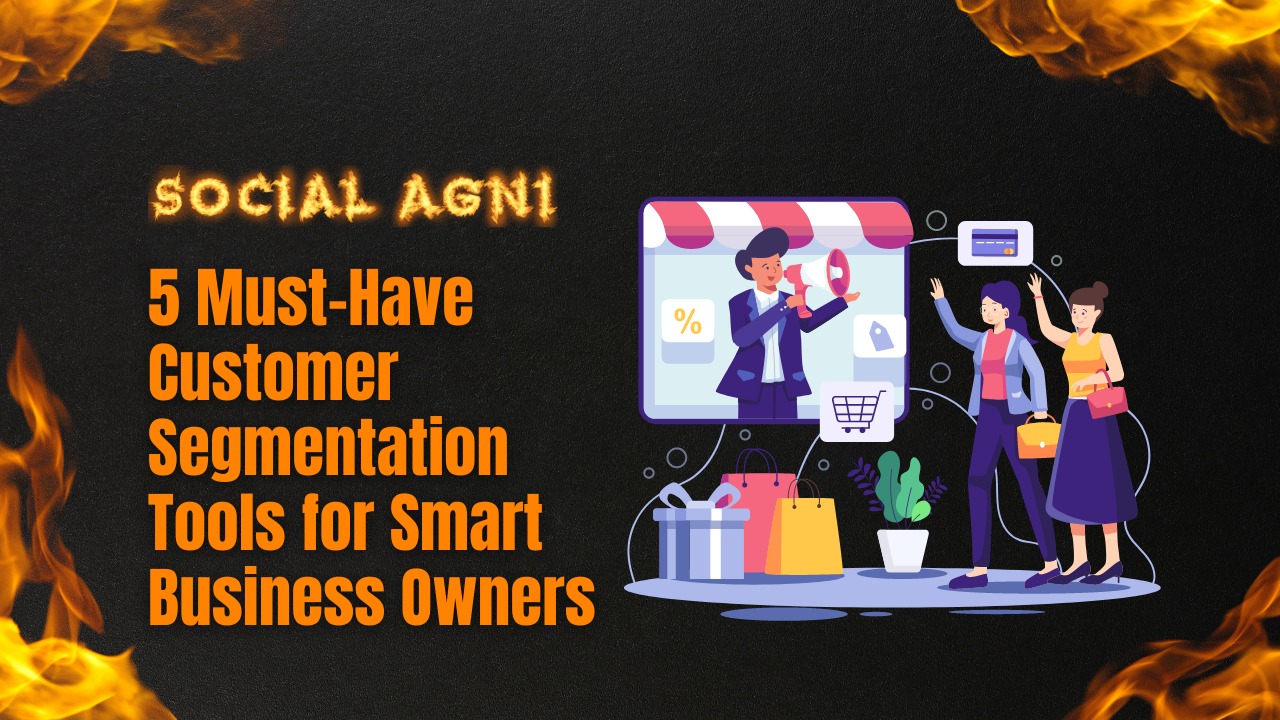Understanding and meeting consumers’ requirements is essential in today’s competitive business environment. Customer segmentation helps. Customer segmentation is grouping customers by demographics, behaviors, interests, and purchasing habits. Businesses may segment clients to better understand their target group, generate personalized marketing efforts, and offer personalized customer experiences. Manually analyzing and categorizing large amounts of client data is time-consuming and difficult. Customer segmentation tools help clever business owners efficiently and successfully segment their customers. Advanced algorithms and data analytics automatically find trends and categorize clients based on preset parameters. Customer segmentation tools give firms meaningful data to improve marketing and strategic decision-making. These technologies let company owners learn clients’ preferences, forecast their behavior, and send customized communications and offers. Personalization enhances client connections, satisfaction, loyalty, and business growth. This post will discuss five client customer segmentation tools that wise business owner should consider adding to their marketing arsenal. These tools were chosen for their popularity, usefulness, and segmentation insights. We’ll discuss each tool’s capabilities, benefits, and how they might improve consumer segmentation methods. To compete in today’s market, you must understand your clients and customize your marketing efforts. Let’s explore how customer segmentation tools may transform your business, boost customer engagement, and boost your success. 5 Must-Have Customer Segmentation Tools for Smart Business Owners Google Analytics Businesses utilize Google Analytics to segment customers. This application helps savvy business owners analyze client behavior, acquire data, and make marketing decisions. Google Analytics tracks and analyses website traffic. A tracking code on your website can reveal your users’ demographics, hobbies, and browsing behavior. This data lets you segment your audience by age, gender, geography, and interests. This segmentation lets you design focused marketing campaigns for certain consumer categories, improving conversions and sales. Google Analytics allows extensive segmentation beyond demographic and interest-based. Create unique segments based on online behaviors like buying, subscribing, or abandoning a basket. Granular segmentation lets you analyze client behavior and customize marketing campaigns. Google Analytics offers robust reporting and data visualization. Conversion rates, bounce rates, and average session time may be reported for each client category. These insights help you discover high-performing categories and allocate marketing efforts. Google Analytics integrates with Google Ads and Google Search Console, making it useful. Linking platforms improves client segmentation. Google Analytics may help you optimize ad targeting, find the most valuable keywords, and improve SEO. Smart business owners use Google Analytics for consumer segmentation. Demographic monitoring, custom segmentation, reporting, and interaction with other Google products help organizations understand their customers, improve marketing tactics, and boost outcomes. Google Analytics lets you maximize client segmentation and grow your business. HubSpot HubSpot is a strong marketing and CRM software with customer segmentation features. HubSpot capabilities allow savvy company owners to segment their audience and create personalized experiences to attract, engage, and delight clients. HubSpot’s Smart Lists categorize customers. Your contact attributes, behaviors, and engagement levels automatically refresh these dynamic lists. Smart Lists let you segment leads by status, geography, industry, or website behaviors. This degree of segmentation lets you target particular client categories with relevant and engaging messaging. HubSpot Workflows automates segmentation and nurturing. Workflows let you build custom actions based on criteria or behaviors. For instance, you may create a process that sends customized emails to clients who abandoned their shopping carts or allocates leads to sales reps based on industry or lead score. Automating these procedures lets you send timely and appropriate communications to diverse target segments, improving their experience and boosting conversions. HubSpot works with email marketing and social media platforms to enhance its segmentation capabilities. These connectors let you get data from many sources and optimize client groups. HubSpot’s CRM also consolidates client involvement history. This data may be used to categorize clients by the likelihood of conversion or special attention. Understanding each segment’s requirements and preferences allows you to create tailored marketing and offers that build connections and loyalty. Mixpanel Businesses use Mixpanel’s advanced consumer segmentation features. Mixpanel helps savvy business owners understand their customers and optimize their marketing tactics by recording events and analyzing user behavior. Event tracking powers Mixpanel’s client segmentation. This tool lets you track and analyze user behavior on your website or app. You may learn how various customer groups use your product or service by identifying and recording key business events. Customer segmentation relies on this data. Mixpanel enables behavioral segmentation beyond demographics. Segment your audience by activities, behaviors, and preferences. You can categorize consumers who have purchased, finished a specified onboarding procedure, or used certain product features. These behavioral categories let you customize marketing, offers, and user experiences for distinct consumer groups, improving engagement and conversions. Mixpanel offers funnel analysis and event monitoring. Funnels show you how users interact with your website or app. Tracking conversion rates at each funnel phase helps uncover user drop-offs and issues. This data optimizes user experience and identifies conversion-boosting initiatives. Cohort analysis from Mixpanel lets you group clients by shared traits or behaviors across time. Cohorts show how marketing campaigns, product improvements, and user behaviors affect customer retention, engagement, and income. Cohort data can help you tailor marketing to specific client segments. Mixpanel also lets you create detailed reports and dashboards with crucial KPIs for each consumer category. These insights let you assess marketing performance, discover trends, and optimize consumer segmentation methods. Finally, Mixpanel provides sophisticated consumer segmentation options for event tracking, behavioral analysis, and cohort analysis. These features help savvy business owners analyze their customers, optimize their marketing tactics, and create personalized experiences that boost engagement and conversions. Customer segmentation may boost business success with Mixpanel. Salesforce Marketing Cloud Salesforce Marketing Cloud delivers advanced customer segmentation. Salesforce Marketing Cloud’s capabilities let savvy business owners segment their consumer base for personalized and targeted marketing efforts. Salesforce Marketing Cloud’s contact data management is crucial. It stores consumer demographics, preferences, purchase history, and engagement indicators. This data lets you categorize customers by age, geography, purchase behavior, and interaction. Salesforce Marketing Cloud’s customer segmentation includes predictive intelligence. The platform analyses patterns and behaviors to
